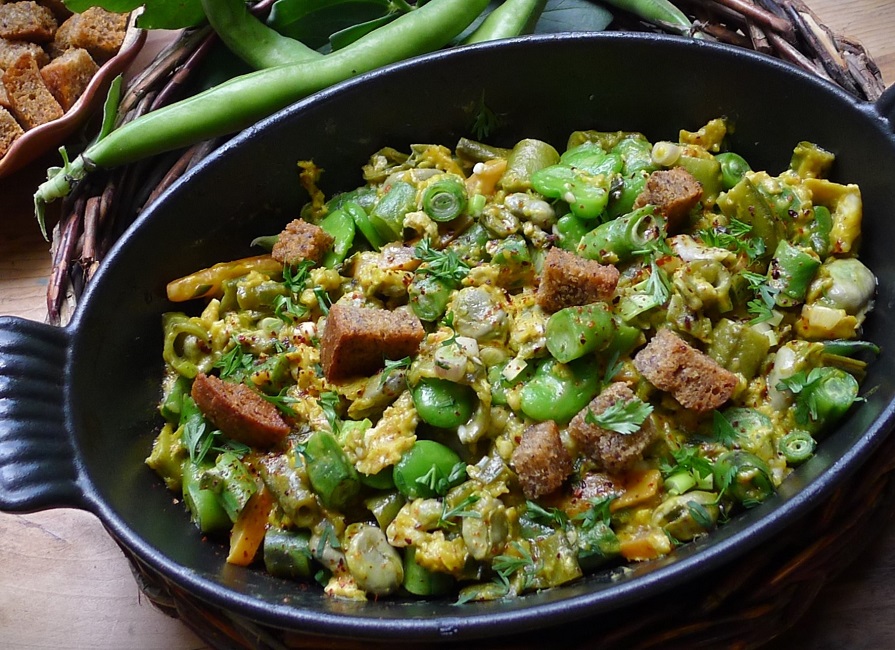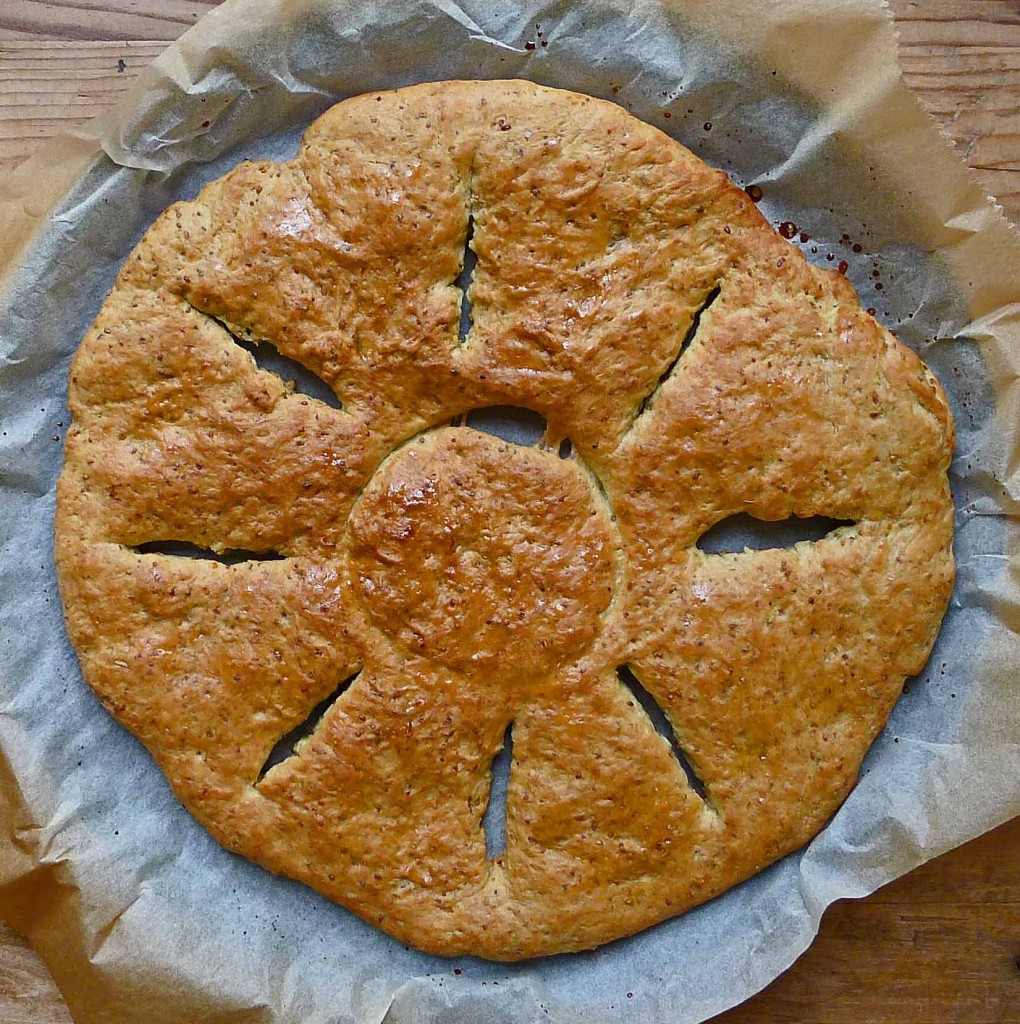Aglaia's Table οn Kea Cyclades (original) (raw)
Kolokotes are the old, delicious vegan pies from Cyprus: only three ingredients for the stuffing, plus an interesting spice combination. They linger between savory and sweet and are a real treat, unlike any squash or pumpkin pie we bake in Greece.


You can enjoy kolokotes as snack, complemented with yogurt, labne, or fresh cheese; drizzled with honey, date or any fruit molasses they become a lovely dessert.
Marilena Ioannides’ recipe is by far the best I have tried –and I did try lots over the years. She bakes the pies on camera –speaking Greek with no subtitles, unfortunately; but consulting my recipe below you can easily follow and understand how to make these simple, exquisite pies. (more…)
This is one of the easiest spoon sweets to make. Traditionally in Greece every July all cooks used to make Vissino (sour cherry) preserves to serve with ice cream or yogurt throughout the year.


Adapted from my book The Foods of the Greek Islands.
The cornerstone of Greek sweets are the preserves made with the fruits of every season.
Each home has several different jars of fruit in the pantry, and guests are offered a teaspoon with a glass of water as a welcome to the house.
I know that fresh sour cherries are not the easiest fruit for most people to get, and their season is so short, so I suggest you make the preserves with perokerasa (Rainier cherries) instead.
Unfortunately, the true color of the Rainier cherries preserves is a quite unattractive murky yellow, so you are better off adding a few drops of red food coloring. Instead, I prefer to boil a red beet with the cherries, a trick I learned from Tunisian cooks.
Makes 3 cups (more…)
We called it strapatsada, from the Italian uova strapazzate (scrambled eggs); it was the comfort food my mother cooked for me and my sister on summer evenings. In the winter I often make it with the cherry tomatoes from the greenhouses of southern Crete, which are quite tasty, althout a far cry from summer tomatoes.
Last week I decided to fry the tomatoes, and instead of mixing in the eggs, I nestled them in the pan, and after 2-3 minutes, I moved the pan to a 200 C oven and baked for 5-8 minutes, until the eggwhite was opaque. We enjoyed it enormously with fresh crusty bread.


Plain scrambled eggs are not a common Greek dish, but a huge egg and tomato scramble, as you might find in a Greek diner in America, is still a national institution. Some people add crumbled feta in the pan, but I much prefer to sprinkle it at the end; I enjoy my strapatsada with toasted bread or with olive-oil-fried potato slices, a heavenly combination!
Serve with toasted multi-grain, whole-wheat bread and a green salad, or with roast vegetables I often serve it with toasted bulgur pilaf, but simple sliced potatoes fried in olive oil are still my favorite complement.

See also the Scrambled Eggs with Fava beans which is another somewhat different, yet equally delicious combination.
Menemen, the Turkish version, has diced peppers, both sweet and hot, along with tomatoes and chopped scallions. The Provençale bruillade à l’Arlésienne (scrambled eggs from Arles) has grated zucchini, tomatoes and garlic (see variations). Much like classic scrambled eggs, strapatsada needs to be soft and creamy, not dry or too watery. I use my own tomato confit or add a few sun-dried tomatoes to the pan to get the intense tomato flavor I remember from my childhood.
Serves 2-4 as a main course, 5-6 as part of a meze spread (more…)
The last days of January found me in Athens, with José Andrés, the renowned chef-humanitarian, his wife Tichi, and Zaytinya’s concept chef Michael Costa. We strolled around the city tasting dishes and sipping wines and cocktails at some of the most talked-about restaurants and bars.


See José Andrés’ Athens list.
We had compiled quite a few suggestions, but José surprised me when he chose Birdman, the Japanese-inspired Pub, for his fist afternoon bites and drinks in Athens. I had proposed we try a few cocktails there later in the night, since it was already past four, but this didn’t stop José from ordering most of the truly wonderful seafood and meat bites chef Ari Vezenes cooks on live fire. He loved the chicken liver and heart, even the Iberico Katsu that I was afraid would not meet his high standards… (more…)
It is an old Mediterranean tradition to have several sweets on display during the end of the year holidays. Part of the traditional Christmas table in Provence this delicious olive oil bread is supposed to be torn into pieces with the hands and never cut with a knife.
From mid-December and up until after the New Year we usually keep on the festive table nuts and dried fruit, plus melomakarona and kourabiedes.



Wikipedia refers also to the Sephardic Jewish tradition to serve various nuts, candied and dried fruits during Rosh Hashanah, the Jewish new year. Catalans and Armenians share similar traditions. (more…)